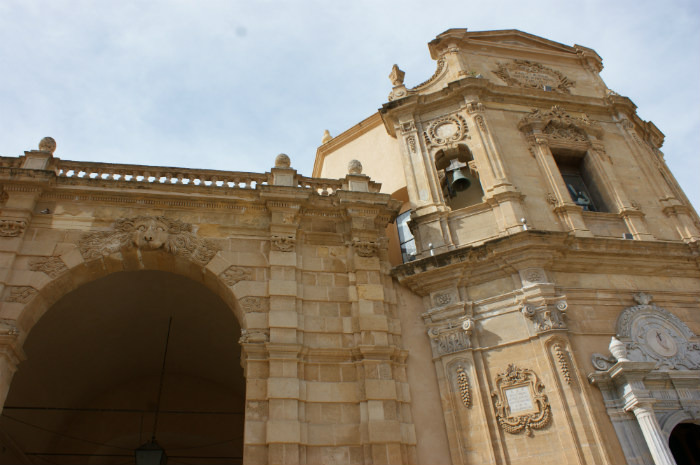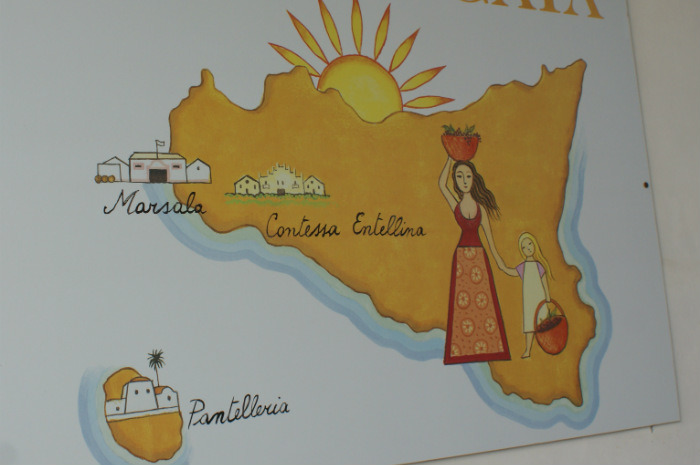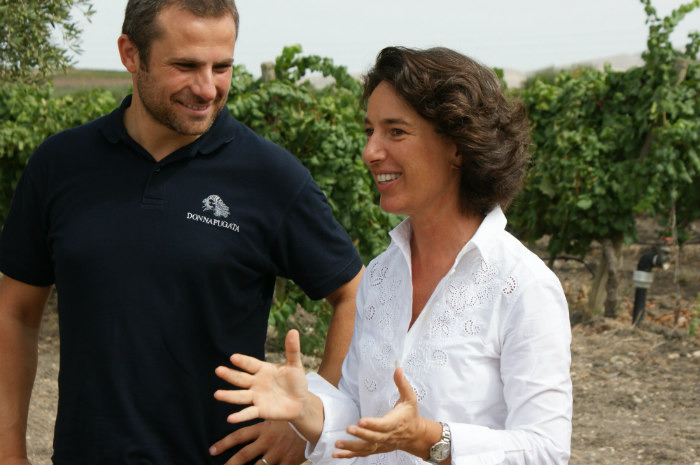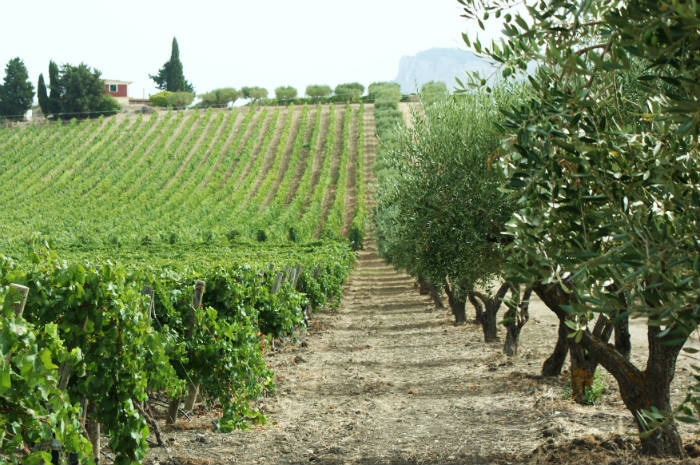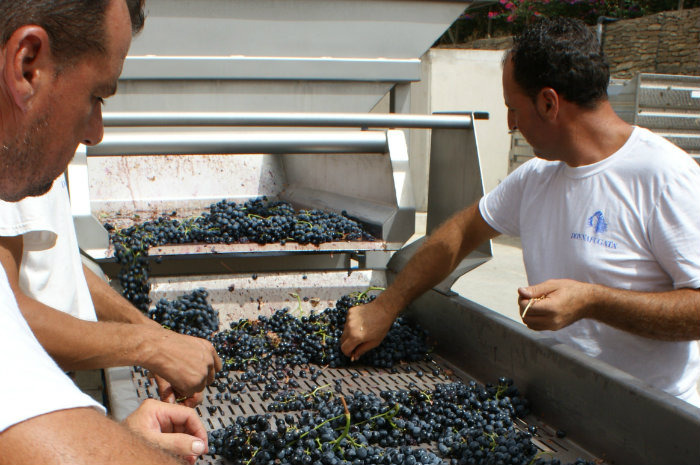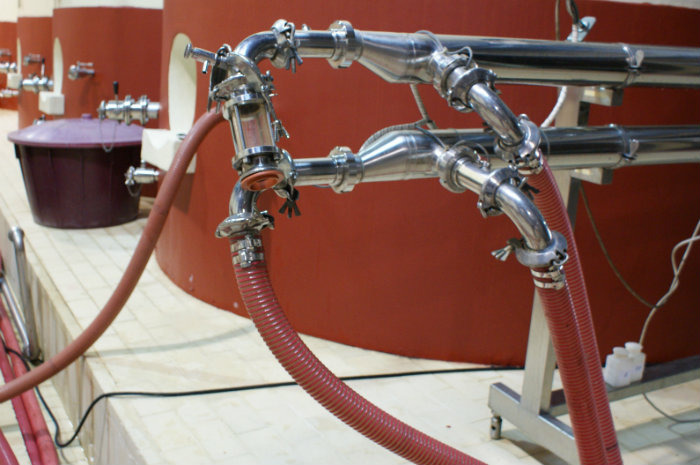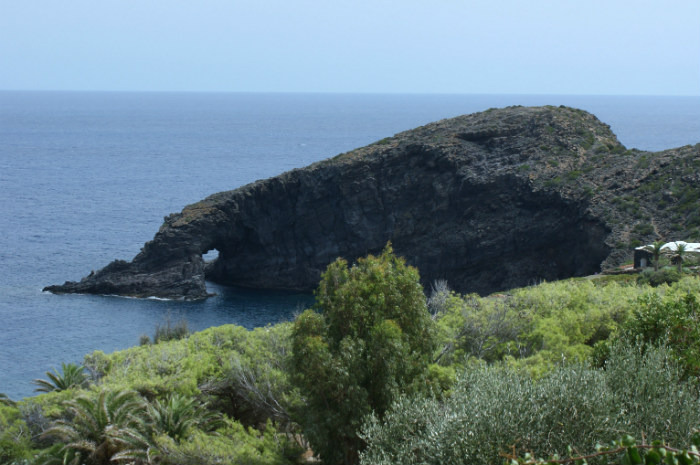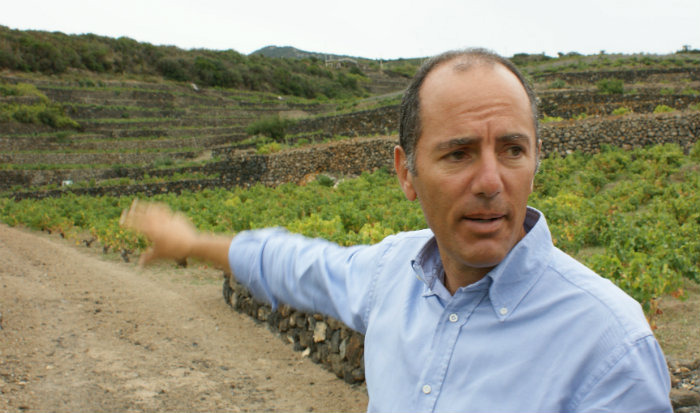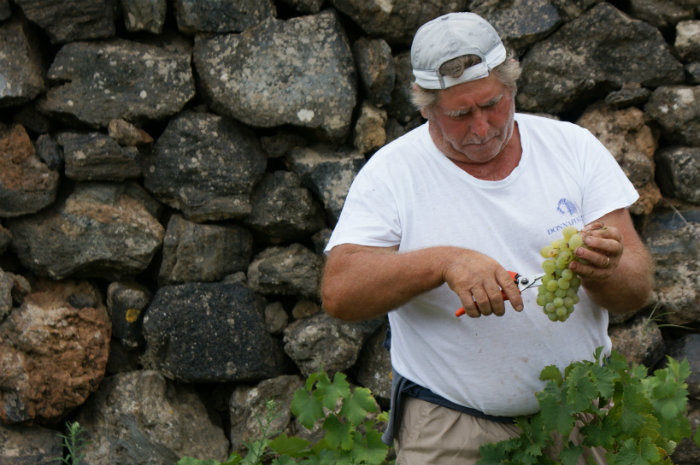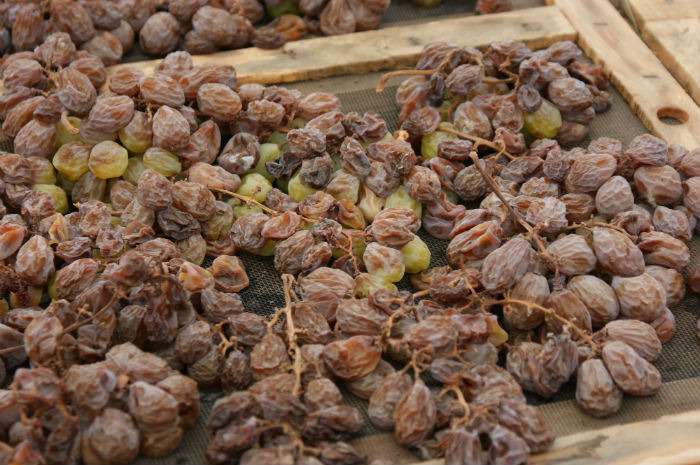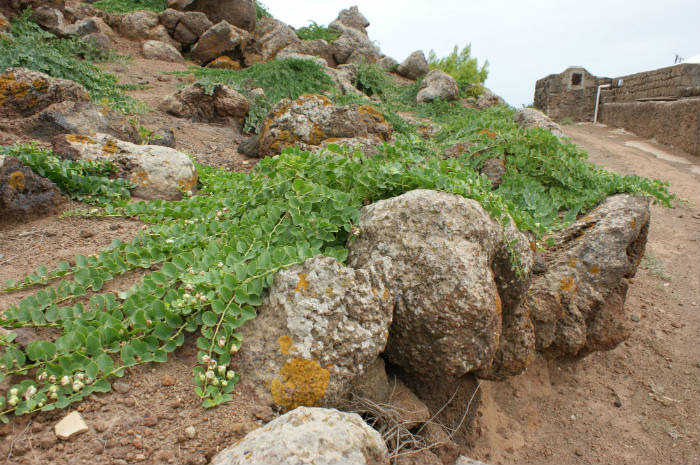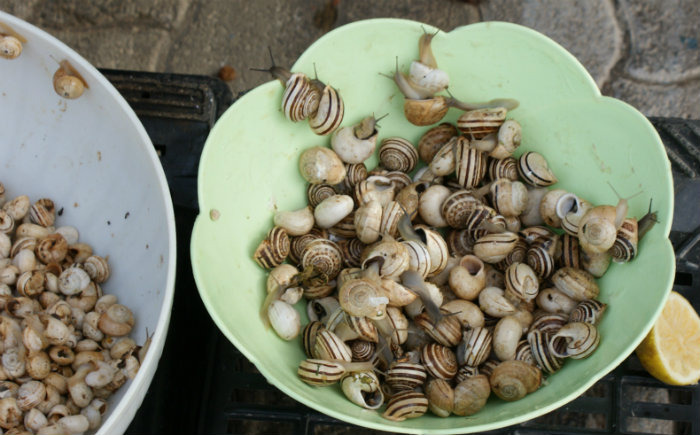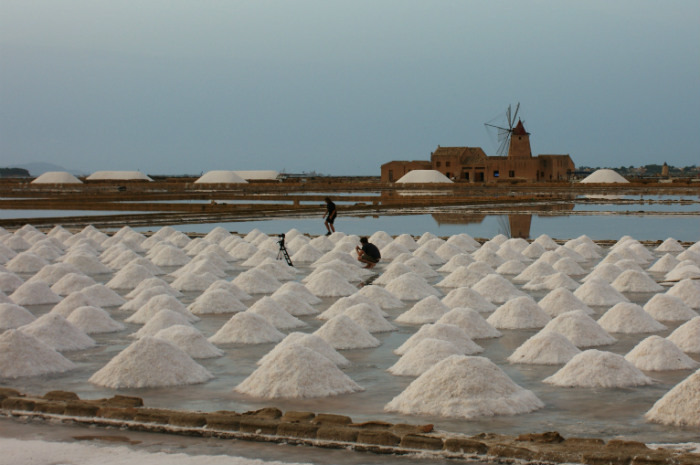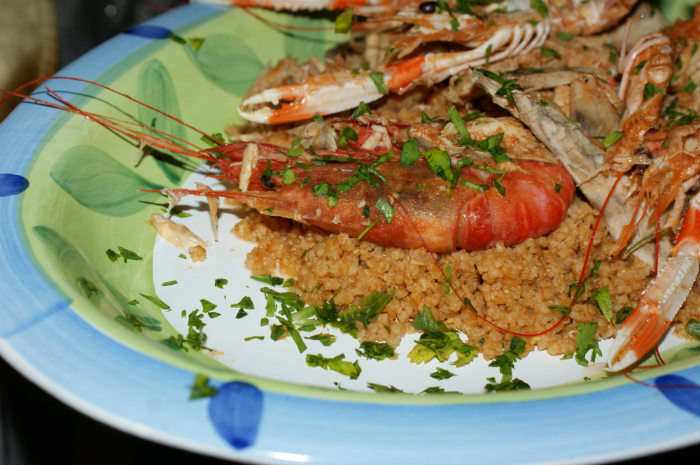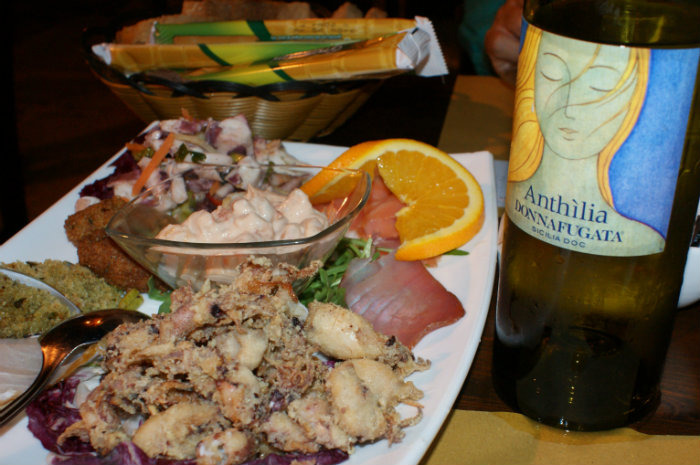Harvest In Sicily
Marsala is a lovely walk-around town with narrow streets, affordable restaurants and many monuments to ancient cultures. Invaders of Italy have often waged their first battles here. In modern times, Garibaldi in 1860 began his unification of Italy campaign by invading Marsala, and Allied forces during World War II almost leveled the city before coming ashore.
Under the Sicilian Sun
There are three locales of winemaking in western Sicily and "Sicilia DOC" — Marsala city, where both traditional sweet wines and table wines are made, the area around the town of Contessa Entellina, where many prime vineyards for dry wines are located, and the rugged island of Pantelleria, off the coast of Tunisia, where naturally sweet wines are made.
Going Native
At Contessa Entellina, Josè Rallo, who with her brother now runs the winery their parents started, discusses the harvest with winemaker Antonino [correct] Santoro. Although Donnafugata has vineyards planted to international grape varieties, Josè tells me in recent years it has concentrated on native varieties such as nero d'Avola and grillo.
Passing the Acid Test
Olive trees line a vineyard where modern viticulture is employed to keep yields low and acidity high – both important factors in making warm-climate wines. Today, Sicily has almost 90 wineries with 11,000 hectares of vines that produce about 21 million bottles of wine exported to 74 different countries. Many find homes in American cellars.
Picky Pickers
Grapes are picked by hand and transported to the winery. Here, nero d'Avola bunches begin the process of de-stemming and hand-sorting, the first in a series of several quality control measures. Because of different varieties and different locations of vineyards, the harvest in Sicily will continue for several weeks.
The Big Chill
Giacomo Rallo, Jose's father, went to California to learn from winemakers there when starting up Donnafugata, looking to change the style of heavy, oxidized wines that were standard at the time. He returned to Sicily and installed refrigerated tanks — such as these — to make fresher, livelier wines, now a standard practice in most of Sicily.
Fantasy Island
Next day, we fly south to Pantelleria, a beautiful island, but a rocky and rain-starved one that suffers fierce winds that require vines to be pruned low in order to flower and flourish. Nevertheless, it makes beautiful, naturally sweet wines from the white zibibbo grape. That process of combining zesty fresh grape juice with sugary dried ones is called passito.
From the Terraces
Antonio Rallo oversees Donnafugata's wine production and spends much of harvest time on this island about an hour's flight from the mainland. Behind him, ancient vineyards climb the hillside in rock-walled terraces. Antonio tells me that when Donnafugata first brought vineyards here, they had to restore about 15 miles of rocky walls to prevent erosion.
Bunch of Attention
Picking grapes on Pantelleria is tedious work, as experienced workers try to remove all bad berries from every bunch. Each spring, trenches are dug around the vines to protect them from strong winds and to collect water. In some areas, cane fences are erected in vineyards, not to stop the Sirocco wind from the Sahara, but to slow it by creating turbulence.
Dried Grapes = Sweet Wines
Some bunches of just-picked grapes – up to 30 tons of them – are spread on screens to dry for two weeks in greenhouses being turned to sun the other side. This concentrates sugar as the water evaporates. Meanwhile, fresh grapes begin fermentation, then dried grapes are added at a 1 to ¾ ratio of fresh to dried. The result will be a bottle of Donnafugata "Ben Ryé."
From Grapers to Capers
Sicily is a haven of food ingredients beyond wine grapes. Pantelleria, for example, is known for its capers, which are actually buds of trailing vines before they turn to flowers which then turn to a bulbous fruit called caper berries. The caper vines or bushes flourish in this windy, salty environment — which is fitting as they often accompany seafood dishes.
Slow Food Movement
Snails are a favored delicacy in Sicily, and when I stroll through the Sunday farmers' market in Marsala, the place is literally crawling with them. Other farm favorites as I pass among the stands are large melons, grown commercially for shipping off island, and lots of fresh tomatoes. Olives and olive oil are also large traditional crops.
Salty Tourists
At Trapani near Marsala, ancient windmills first move Mediterranean seawater among beds for evaporation. Then this mill grinds blocks of dried salt into mounds of coarse salt along with the more delicate fleur de sel. The area is a large draw for tourists who both want to experience the salt-collection process and to take photos of the old mill at twilight.
Couscous Heaven
In addition to salt, Trapani is also known for its couscous made from rapidly steamed and flavored semolina or durum wheat grown locally. Traditionally, it is served with a white fish or shellfish, such as these giant shrimp, with the addition of spices, especially parsley. All served with a Sicilian white wine, of course.
Ciao Chow
I say my reluctant goodbyes to Sicily with a dinner in old town Marsala and a seafood platter, which includes breaded fish. "They say in Sicily that bread crumbs are the cheese of the poor," my host laughingly tells me as we enjoy a bottle of Donnafugata "Anthilia," made primarily from the native catarratto grape. Ciao, Josè and Antonio. Happy harvesting!
